Panch Pokhari : 9th Highest Altitude Wetland in the World
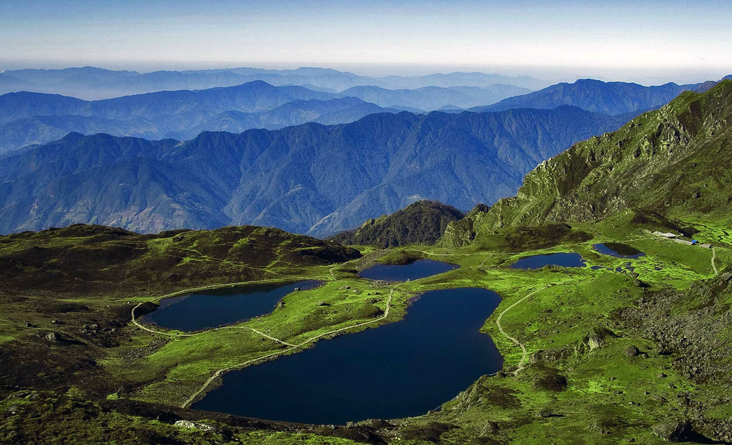
The wind howled outside the thin walls of the tea house in Noshyampati (3700m), its icy fingers clawing through every crack. Inside, the dim light flickered over wooden bunk platforms, stacked like coffins, meant for twenty souls. That night, we were among the lucky ones—we found an unoccupied bunk.
But luck had its limits.
The food, if you could call it that, was a cruel joke. Even our gnawing, empty stomachs rebelled—this was beyond edible. The stench from the overflowing toilets clung to the air, so foul that most chose the open ground instead, answering nature’s call beneath the indifferent stars.
November 2020. The off-season. Only one tea house remained open, and we had no choice but to endure its frigid embrace. The cold seeped into our bones, relentless. No extra blankets, no mercy. The night stretched on, endless, as we shivered in the dark, sleep a distant dream.
At 5:00 AM, we dragged ourselves from the bunks, desperate for the sunrise. Around us, other trekkers stayed buried in their blankets, lost in uneasy meditation—or perhaps just too broken to move.
We stepped out into the biting dawn, hunger and exhaustion our only companions, wondering if the morning light would bring warmth—or just another day of survival.
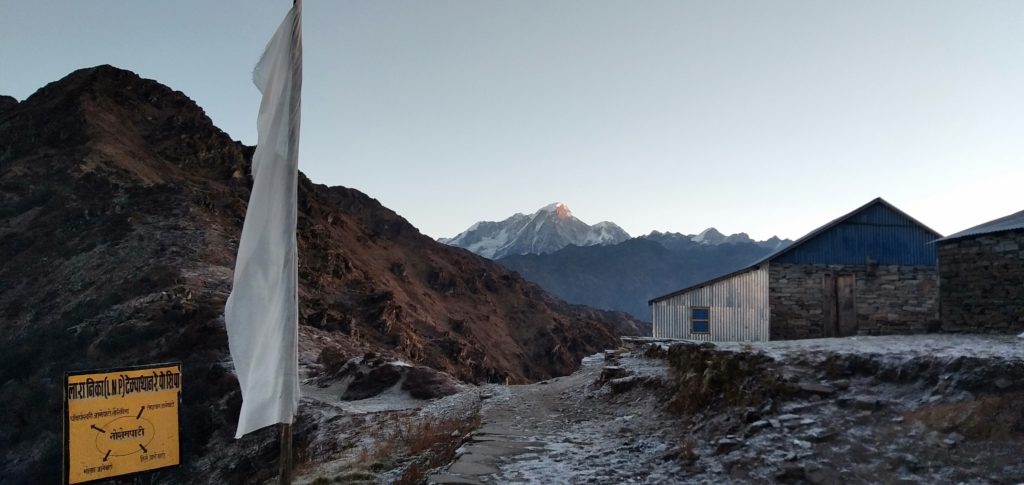
I still remember how it all began—a random scroll through social media when Bikram Bhatta’s post about the Panch Pokhari trek caught my eye. His company, Jeepmandu, promised adventure, and something in me just clicked. Without overthinking, I messaged him—one impulsive enquiry, a quick booking, and just like that, my fate was sealed.
The morning of departure arrived too soon. Before dawn, a Scorpio pulled up outside my home, engine growling. Inside, unfamiliar faces—strangers bound together by nothing but a shared destination. No introductions, just silent nods and sleepy glances as Bikram, our driver and guide, shifted gears and tore through Kathmandu’s empty streets.
The road unspooled ahead—Kathmandu to Melamchi, then climbing higher toward Bhotang. The hum of tires on asphalt, the chill of morning air rushing through half-open windows, the scent of damp earth as we left the city behind. No turning back now. I was in Bikram’s hands, hurtling toward the unknown with a Vehicle full of strangers, trusting that this spontaneous decision wouldn’t end in regret.
But that’s how the best stories start, isn’t it? With a single reckless “YES.”
Our team of eight—including two female—gathered around the campfire outside the homestay. One of them, Salina, was a captain in the Nepali Army, though this was her first trek. The other, Madhumitta, was an experienced trekker who had completed many trails before.
Madhumitta had her doubts, saying Salina might struggle since it was her debut trek. But that night, we enjoyed the warmth of the fire, shared a delicious dinner, and stayed up late under the stars. The homestay had three rooms for the eight of us. I shared a room with Sujan and an older man he called Buwa (which means “father” in Nepali).
Earlier, when Sujan was booking the trip, Bikram had refused to let his Grandpa join, worried about the high altitude. But then Sujan clarified—”Not Grandpa, father.” Satisfied, Bikram agreed. Naturally, we all assumed the old man was Sujan’s father.
The truth came out that night in the room—Buwa was actually his Grandpa. The mystery was solved, and we laughed at the little deception.
Every time is tea time in Nepal.
We began our first day’s trek from Deurali (an hour’s drive from Bhotang) after having black tea. Bhotang serves as the social and commercial hub before Panch Pokhari.
We trekked at our own pace, frequently stopping for refreshments at trailside teahouses and chatting with passersby. At one stop, Grandpa was sipping coffee from a tiny thermos cup like it was no big deal. He offered me some, and I—being the cautious soul that I am—asked, “Is it hot?”
Grandpa, with the wisdom of a man, calmly said, “No, it’s cold.”
Foolishly, I trusted him. I opened my mouth and tossed the entire contents in without hesitation. My taste buds screamed. That coffee wasn’t just hot—it was a liquid sunbeam straight from the depths of a volcano. I spat it out like a malfunctioning fountain and gasped, “How can you drink this?!”
Grandpa just chuckled and took another sip, completely unbothered.
Most of the time, I’ve trekked with complete strangers, though occasionally, I’ve also gone with one or two trusted friends—or even alone. In trekking, having confidence in your teammates is no small concern. One trekker’s actions can affect the welfare of the entire team.
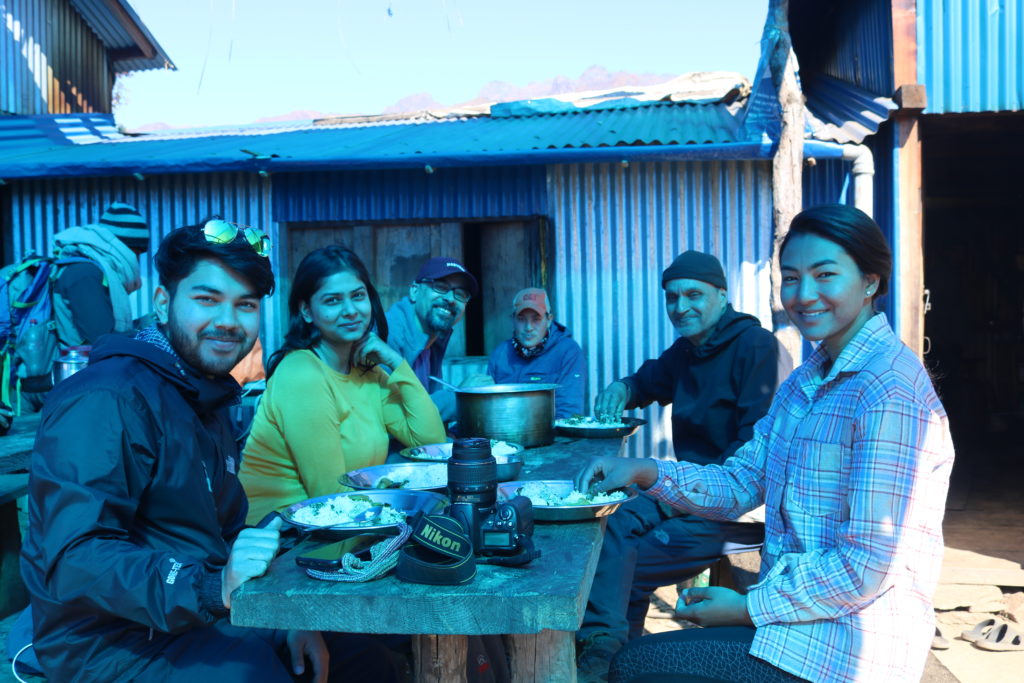
Delicious food was waiting for us at Tupi Danda. We had rice, lentils, mushroom-potato curry, mixed vegetables, and pickle. We clicked pictures, took selfies, and uploaded them to social media—thankfully, the phone signal and internet were working fine here.
After lunch, we resumed our trek toward Noshyampati. The trail led us through glades of juniper and dwarf birch, past towering pine trees, thundering waterfalls, and serene lakes.
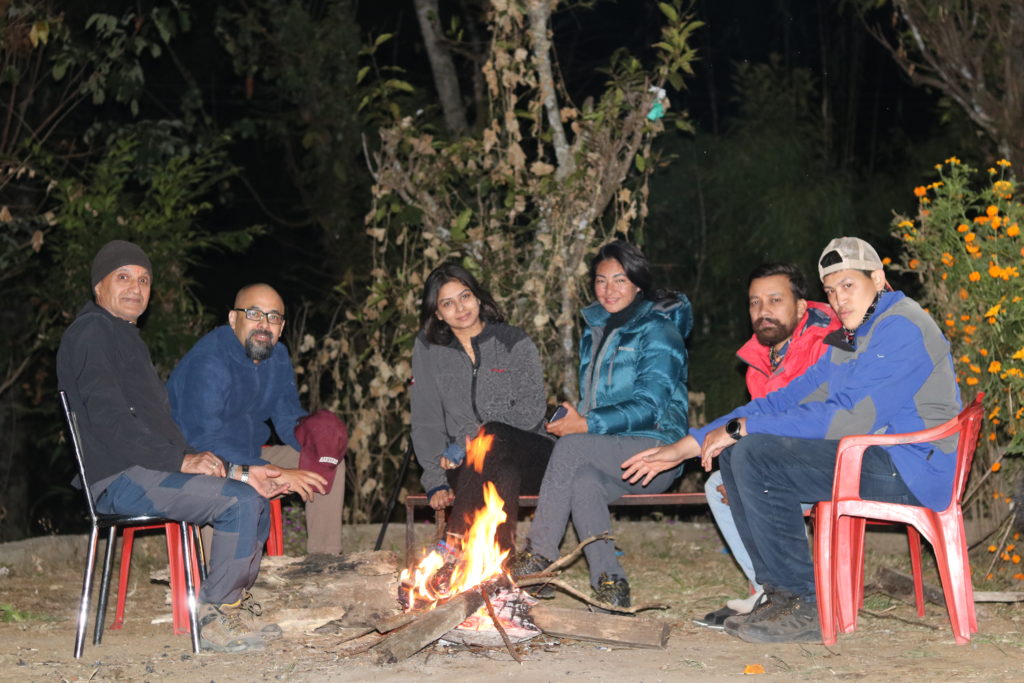
“Just 10 more minutes!”—the universal lie every trekker hears at least 37 times a day. No matter when or where you asked “How far is the next destination?”, the answer was always the same: “Only 10 minutes more!”
Spoiler alert: It was never just 10 minutes.
After what felt like a lifetime of suspiciously flexible “10-minute” intervals, we finally stumbled into NOSHYAMPATI—our promised land, our resting place, and the only spot where our guides could no longer gaslight us about distances.
This was where we collapsed for the night, dreaming of revenge… and maybe some better timekeeping.
The next morning, our adventure leveled up as we charged toward Panch Pokhari (4100m) from Noshyampati! The trail transformed into a wild obstacle course—jagged rocks, endless staircases, and the legendary Lauri Bina, known as the “No Stick Zone.” Local legends say you should leave your walking stick here, but let’s be honest—we all clung to ours like lifelines. Some traditions are meant to be broken when survival’s at stake!
After climbing the last tough stretch of steep, rocky stairs, we finally reached Panch Pokhari—the Five Holy Ponds. The sight took our breath away! The frozen ponds shone brightly between the huge mountains. It looked magical, like something from a dream.

This place isn’t just beautiful—it’s record-breaking! As the world’s ninth highest altitude wetland, Panch Pokhari doesn’t just dazzle the eyes; it stirs the soul. Each of its five sacred ponds pulses with spiritual energy, making this spot in Sindhupalchowk district a powerhouse of natural wonder and divine presence.
During the festival Janai Purnima (in the month of August), the mountains echo with devotion as Hindu and Buddhist pilgrims transform this alpine paradise into a vibrant festival of faith. But today? It was all ours—a reward for every grueling step, every “just 10 more minutes” lie, every stubbornly kept walking stick. We didn’t just reach PANCH POKHARI—we earned it, and the victory tasted sweeter than mountain air!
We spent hours exploring this hidden gem of the Himalayas – one of Nepal’s most spectacular yet less-traveled trekking routes! Legend says bathing in these sacred ponds washes away bad karma and purifies the soul. Whether true or not, four of us (brave souls) couldn’t resist! Stripping down (brrr!), we took the icy plunge, shouting “Jay Sambho!” as we honored Lord Mahadev.
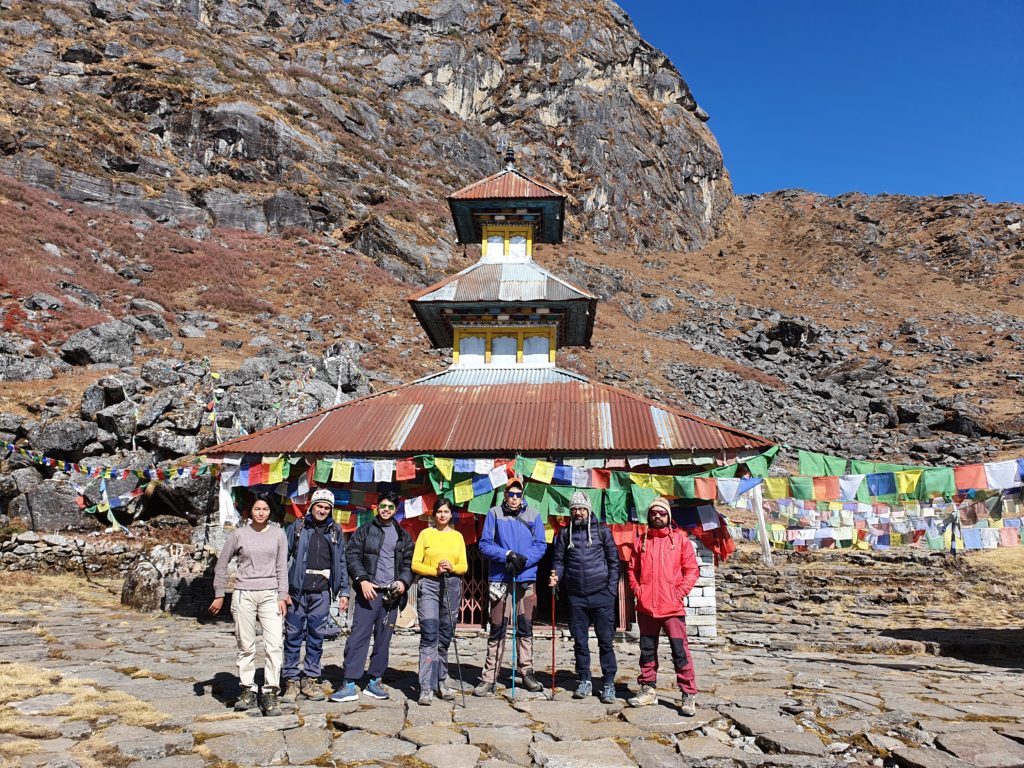
After a quick lunch, we trekked back to Noshyampati. The evening was wonderfully peaceful – fewer trekkers than before. Dinner? Let’s just say it fueled us for a solid 8 hours of deep mountain sleep. Meanwhile, some teammates stayed outside the teahouse, lost in the magic of counting endless Himalayan stars under the clearest night sky imaginable.
What a day – from sacred dips to starry nights, this adventure kept getting better!
The morning air was crisp and cool as we stirred awake before dawn, eager to catch the first golden streaks of sunrise over the hills. As the sky blushed with hues of pink and orange, one thoughtful boy handed us steaming cups of black tea exactly the warmth we needed. With 3-4 cups fueling our spirits (and a handful of biscuits for strength), we began our descent toward Bhotang, the path winding down through lush greenery and mist-kissed trails.
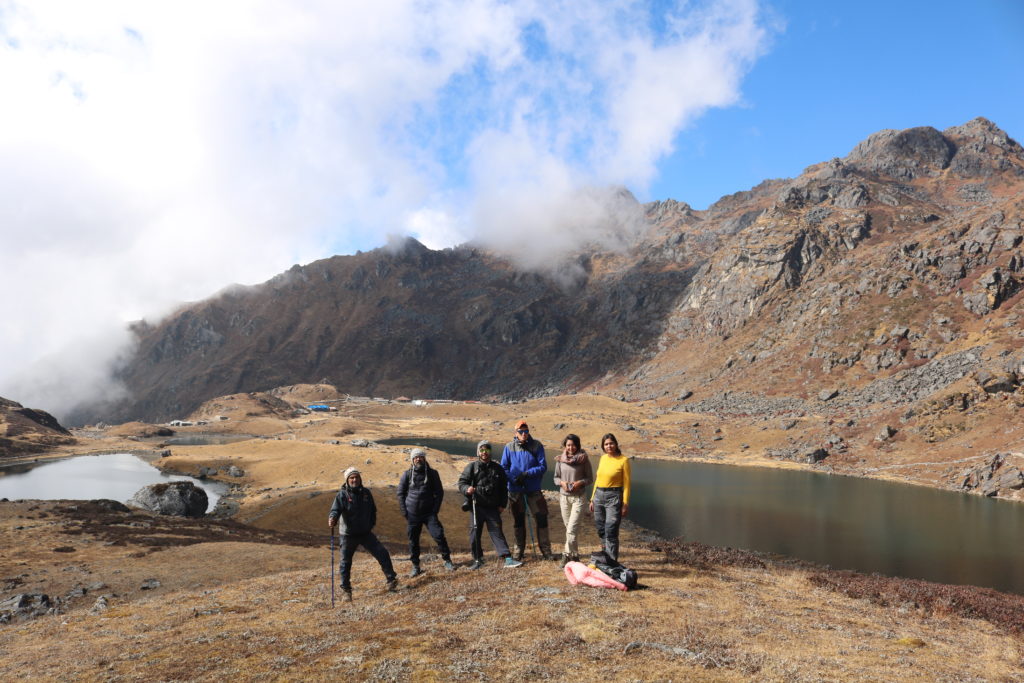
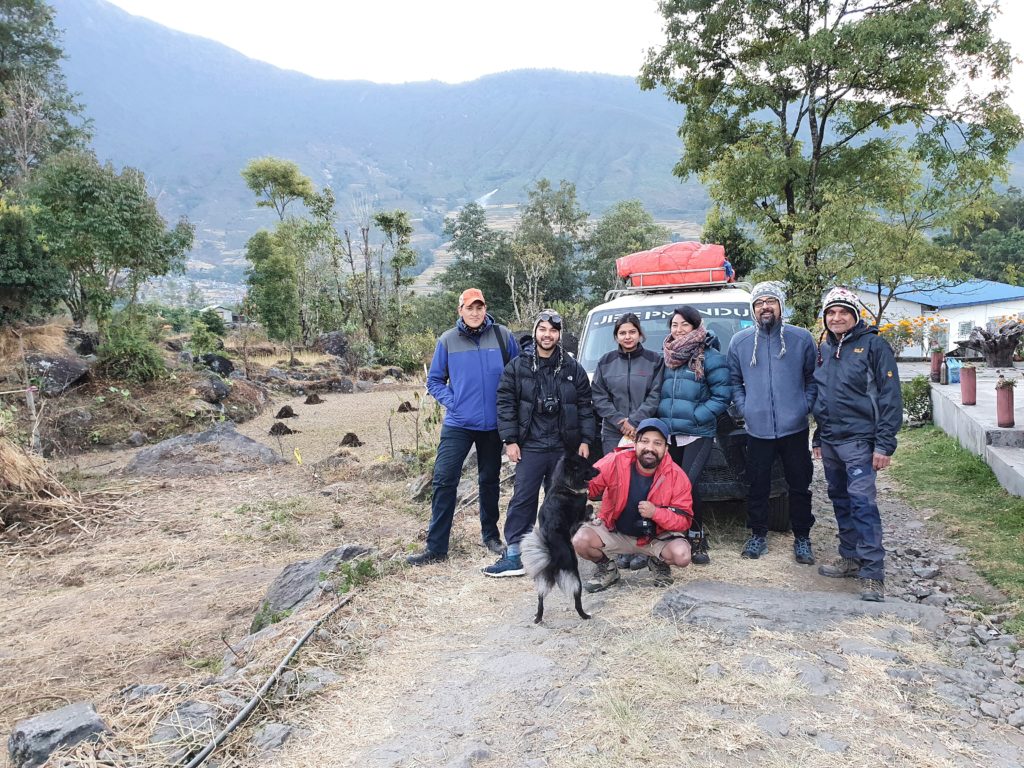
Madhumitta, our ever-resourceful trekker, had perfected a rather clever strategy. No matter where the trail led—steep climbs, rocky slopes, or slippery descents—she had a way of convincing the male trekkers to carry her backpack. Earlier expeditions had involved dramatic tears and pleading, but this time? No tears needed. Just a well-timed sigh, a flutter of her lashes, and voilà—her pack found a new bearer. The rest of us trudged on, shoulders aching under our own loads, until Captain Salina—ever the warrior—took pity and lightened Madhumitta’s burden further by stuffing some of her own gear into the already-relieved backpack.
It was almost amusing how, just the starting day, Madhumitta had fretted over Salina, questioning whether she could keep up. But as the miles unfolded, it became clear— Salina was a force. Stronger in mind and body than any of us had guessed, she moved with quiet determination, her resilience outshining even the cleverest of tactics.
And so, with tired legs but lightened hearts (and backpacks), we pressed onward, the adventure weaving its magic around us—one step, one laugh, and one clever trick at a time.
With renewed energy, I quickened my pace, the cool mountain air rushing past me. Bikram called out, asking me to push ahead and order lunch at Tupi Danda—so I did, securing a warm meal for our weary group. An hour later, the rest arrived, and we gathered around steaming plates, laughter and stories filling the air as we refueled for the final stretch of our journey.
The afternoon sun guided us back to the familiar homestay. That evening, the eight of us feasted on a full-course dinner—flavors of the mountains dancing on our tongues. Though the others indulged in every dish, I kept it simple, savoring just the comforting warmth of rice and chicken curry.
Gathered tight around the flames, we shared tales from the trails—moments of struggle, bursts of laughter, and the quiet realizations that only the mountains can bring. Tomorrow would come too soon, with an early morning departure, so we reluctantly turned in, the weight of the day’s miles pulling us into deep, dreamless sleep.
But before I close my eyes, one truth lingers in my heart, as real as the peaks around us: The fastest way to make a friend for life is to travel with a stranger. And here, under this roof, among these faces that were once unfamiliar, I knew—we were strangers no more.
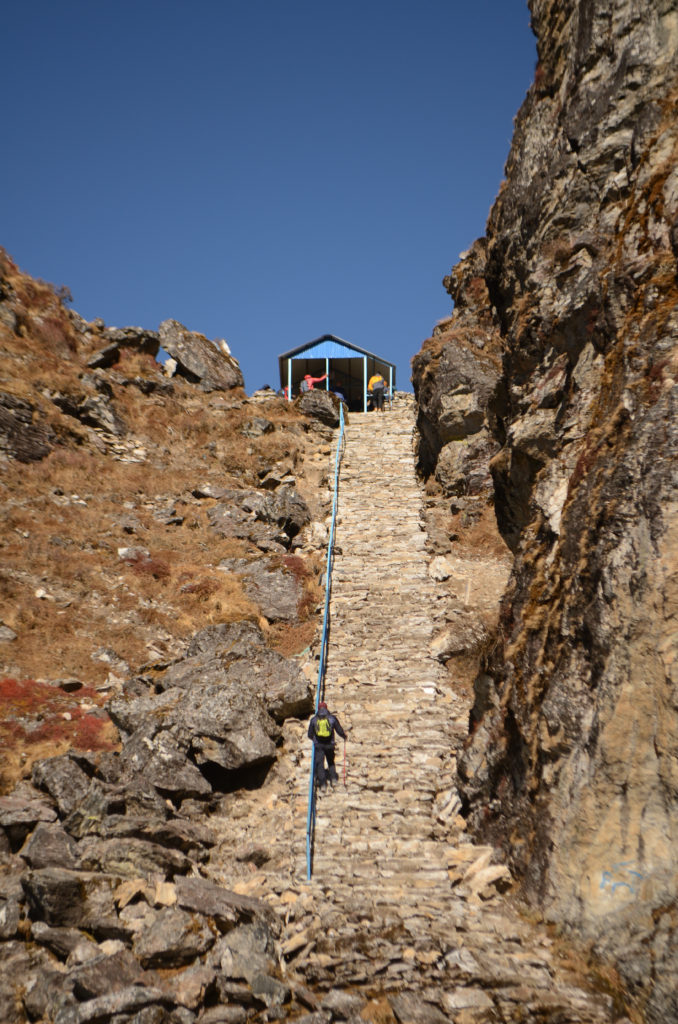

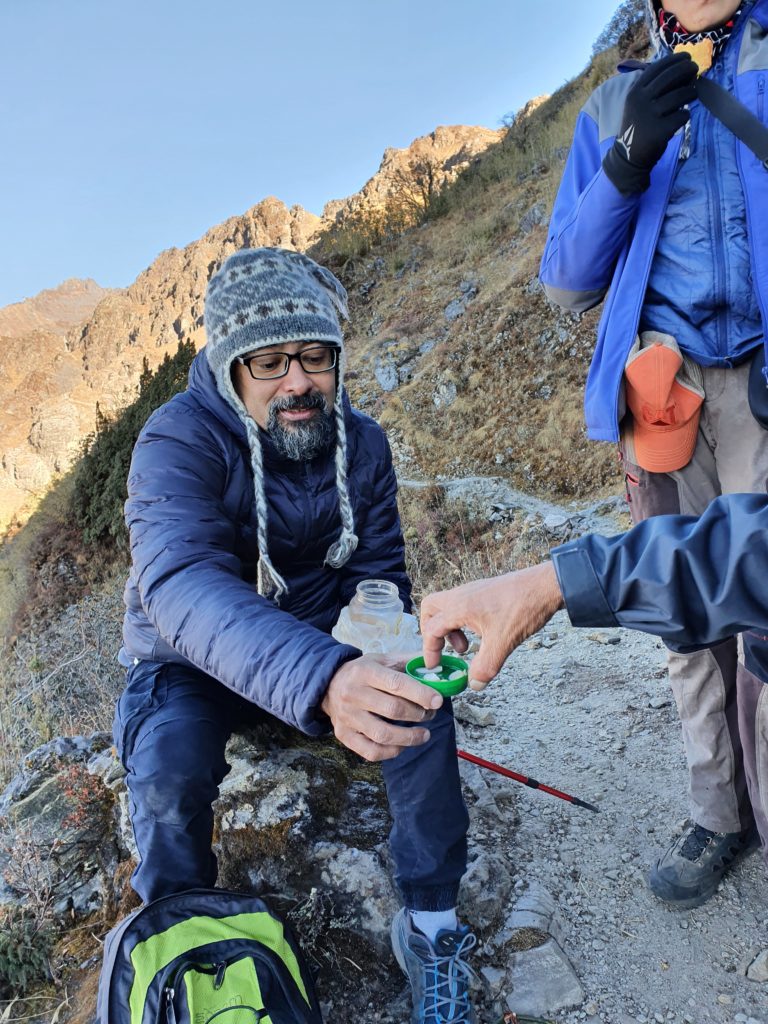
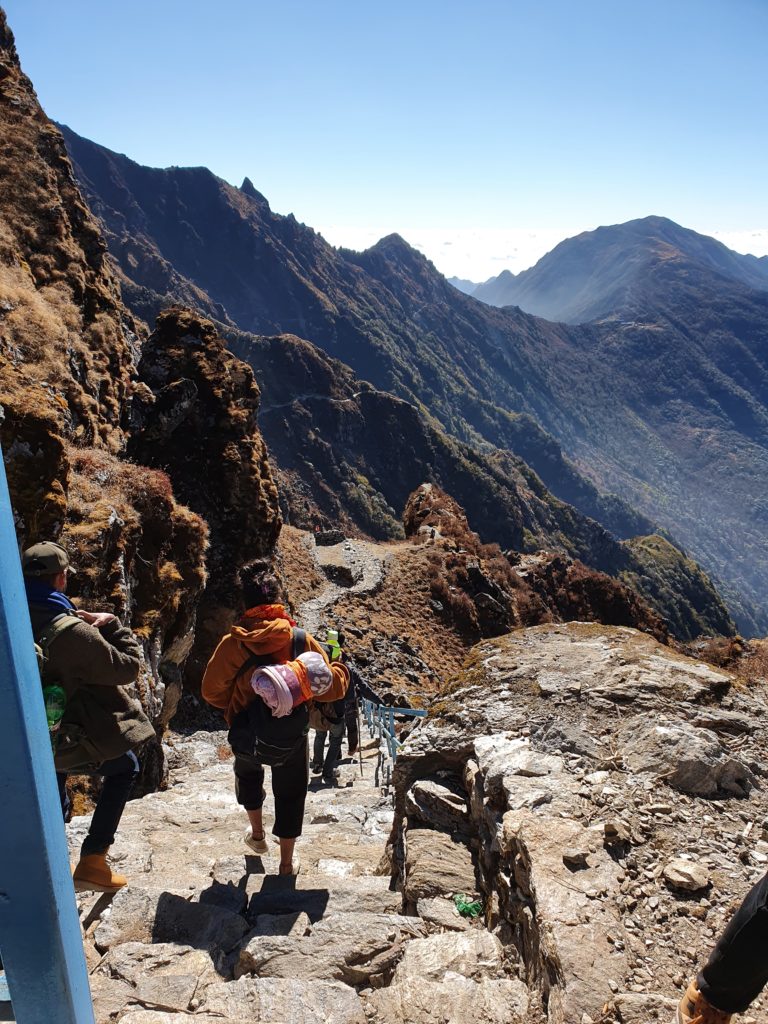
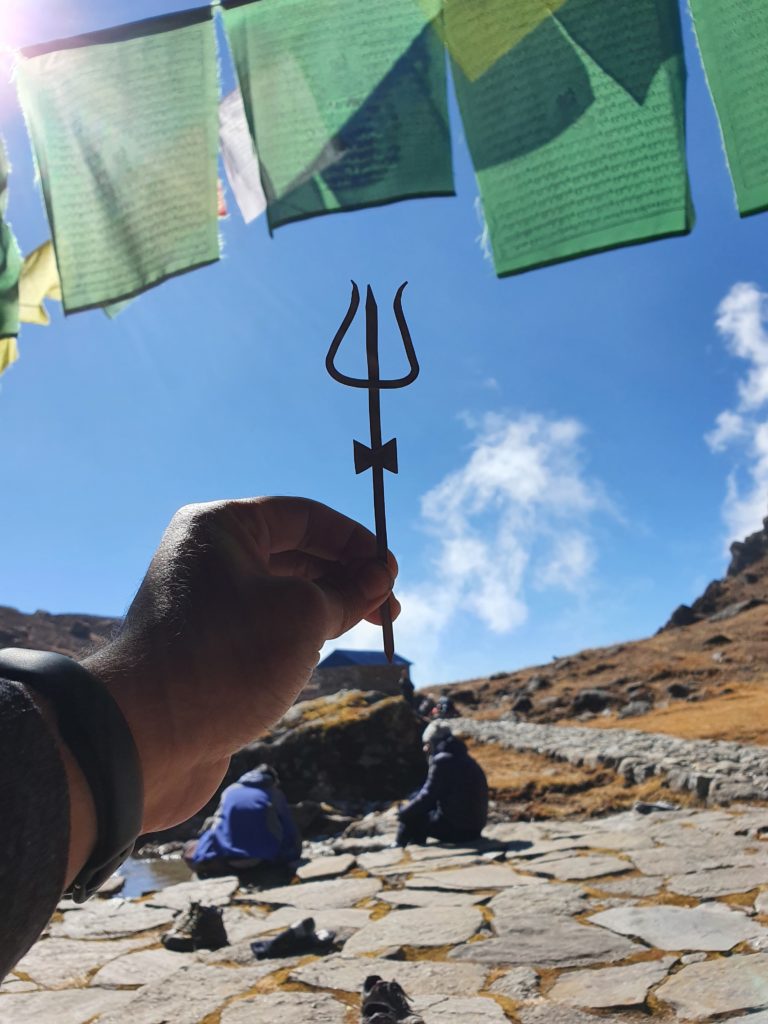

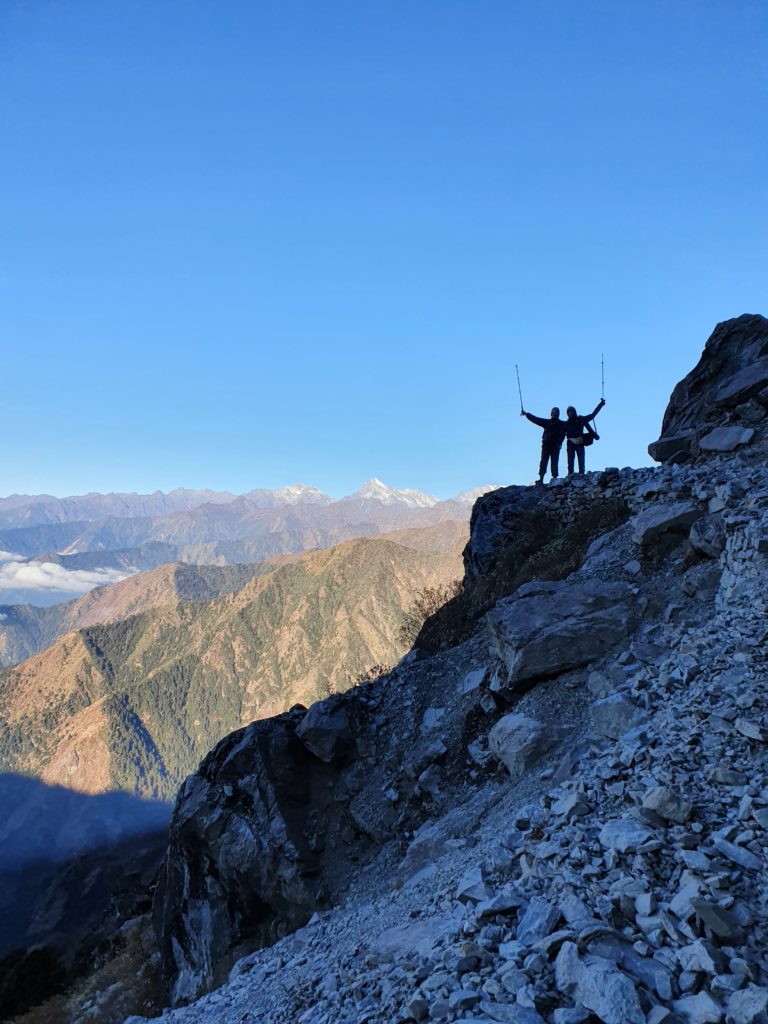
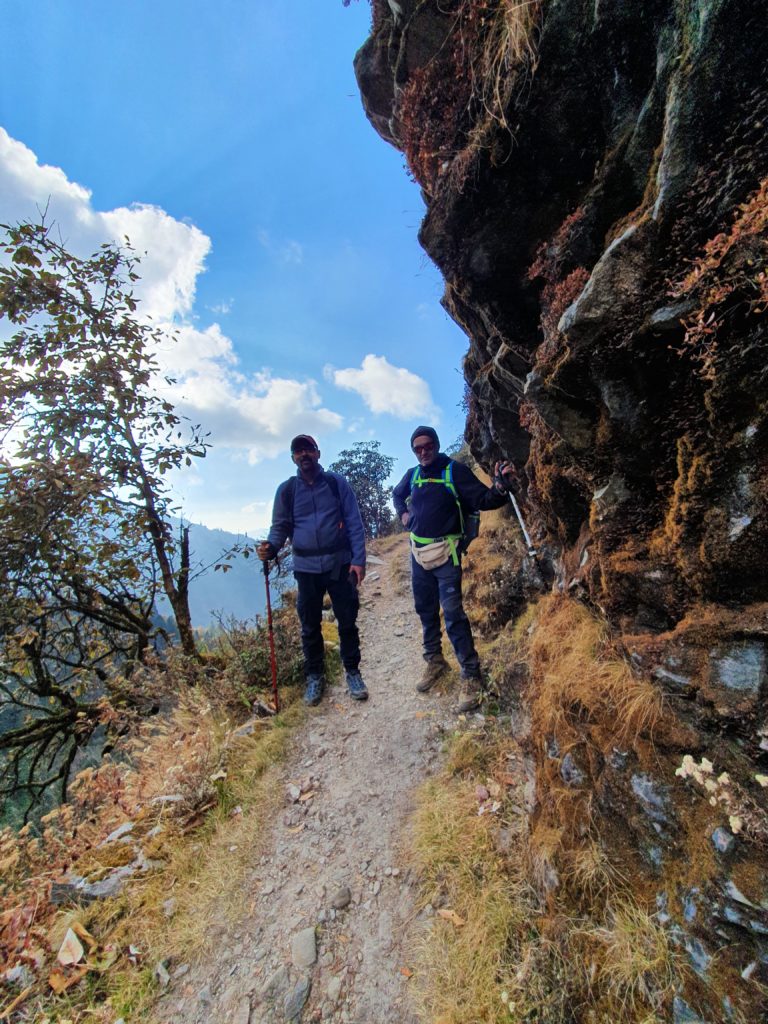
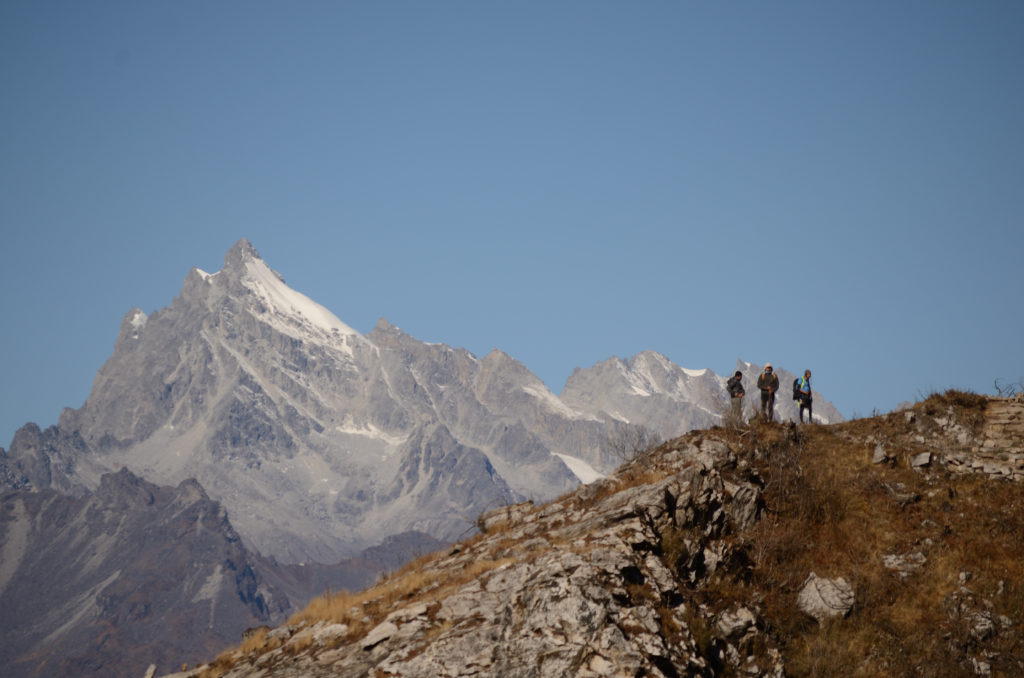

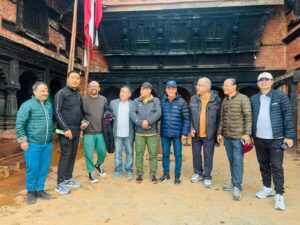
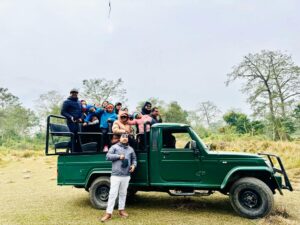
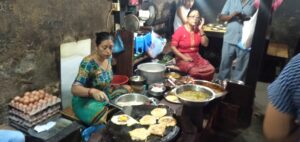
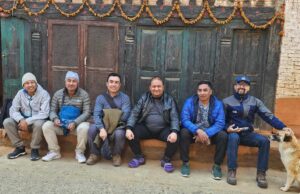
Thank you for the information…It was interesting to read about the experiences that you trekkers had!!Beautiful Nepal!
Interesting as well as amusing adventure. This surely looks like a book in the making. Good luck
Thank you for the lovely and interesting description about Panch Pokhari. The best view omes after the hardest climb! Will visit soon!
When is the best time of the year to visit this place?
July August
paisa kati jati parna aaucha ani kati din jati laagcha
8K-15K and max 5 days
Panchpokhari trek kati din lagcha, kati paisa ani is it worth it to trek?
We are planning for 3-4 days. please help
As someone who reads a lot of online content, I can say with confidence that this blog is one of the best I’ve come across. The author’s writing is clear, concise, and informative, and their ability to present complex ideas in an accessible way is truly impressive. What I appreciate most about this blog is its commitment to providing factual and balanced perspectives on a variety of topics. It’s clear that the author takes the time to research each post thoroughly, and the end result is content that is both informative and interesting.